Entomology, Ornithology & Herpetology: Current Research
Open Access
ISSN: 2161-0983
ISSN: 2161-0983
Research Article - (2021)Volume 10, Issue 11
In the mountainous region of Northern Vietnam, field surveys in 2 National Parks, 7 Nature Reserves, Lao Cai, Cao Bang, Hoa Binh, Son La, Bac Kan and Lang Son provinces shows that the 76 species of 43 genera, 7 subfamilies of family Reduviidae (Heteroptera) were recorded, among them 5 species are newly recorded in Vietnam. The Lao Cai (Bat Xat, Hoang Lien) has the highest diversity index and Bac Kan (Nam Xuan Lac), Lang Son (Huu Lien) have the lowest diversity index. The index of similarity of species composition at 6 surveyed sites were divided into group 1, Lao Cai (Bat Xat, Hoang Lien) and Cao Bang (Phia Oac-Phia Den); group 2, Hoa Binh (Thuong Tien, Hoang Kia-Pa Co) and Son La (Xuan Nha, Copia) and group 3, Bac kan (Nam Xuan Lac) and Lang Son (Huu Lien). The number of species in higher montane evergreen forest and lower montane evergreen forest is the biggest (69 species), in the lowland evergreen forest and lowland semi-evergreen forest have 28 species, in agricultural ecosystems is containing 26 species, the buffer zone is containing 13 species and grassland is containing 17 species. The prey of 60 species of the family Reduviidae was recorded.
Assassin bugs; Reduviidae; Prey; Heteroptera
The species of the assassin bugs (Heteroptera: Reduviidae) is documented with approximately 7000 species of 29 subfamilies. Many species play an important role in the food chain of animals and plants, as well as the ecological balance. Many species are either known as predators of many dangerous pests or their indicative role for forest habitats except species blood-sucking bugs (about 139 species) are dangerous vectors of disease to humans and animals [1]. The mountainous region of Northern Vietnam is fairly particular; it is adjacent to Guangdong, Guangxi and Yunnan of China to the north, Laos to the west, Red River Delta and Central North to the south, and Gulf of Tonkin to the east. Administratively, this region includes 11 provinces of Ha Giang, Cao Bang, Lao Cai, Bac Kan, Lang Son, Tuyen Quang, Yen Bai, Lai Chau, Dien Bien, Son La and Hoa Binh. The mountainous region of Northern Vietnam includes the Northwest mountainous region and the Northeast mountainous region. Northwest mountainous region is a region consisting mainly of medium and high mountains. This is the place with the highest, most fragmented and most dangerous terrain in Vietnam. The common terrain types here are high mountain ranges, deep valleys or canyons, limestone plateaus of medium elevation. The highest and most massive mountain range is the Hoang Lien Son range with many peaks over 2500 m, the highest peak is Fansipan of Hoang Lien National Park (3143 m). The Northeast mountainous region consists mainly of medium and low mountains. The massif upstream of the Chay River has many peaks above and below 2000 m, which is the highest area of the region [2].
So far, the study on the species of the family Reduviidae in Vietnam only focused on the Central Highlands of Vietnam and some provinces of Northern Vietnam such as check listed 138 species of 9 subfamilies. Discovered 2 new genera, 8 new species. New recorded for Vietnam 01 subfamily (Centrocneminae), 15 genera and 40 species. Identified 59 species with 15 species are their prey. The identified 2 common species of the genus Sycanus have an important role in protecting crops. Some biological characteristics of species Sycanus falleni, Coranus fuscipennis (Harpactorinae) were recorded. Identify species of blood-sucking bugs are Triatoma rubrofasciata in the North and with the increase in number in Ha Noi city [3-8]. However, the study on the species of assassin bugs and their preys in the mountainous region of Northern Vietnam is very little conducted. Many new taxon for science and the new record is not discovered and published. The information and data about the species diversity, their prey, as well as the relationship between them with their prey are not interesting and attentive.
Field surveys
The larvae were reared at 25°C ± 1°C and 60%-70% Relative Humidity (RH) with a 14:10 photoperiod on an artificial diet at the College of Agriculture, Yangtze University (20). The adults were fed with 10% honey. In bio-assay, the larvae were transferred to tobacco leaves gently.
1. Bat Xat Nature Reserve (Lao Cai province) with an area of 18.637 ha, spreading 22°23’-22°37’ N; 103°31’-103°43’ E which is located on five communes (Y Ty, Den Sang, Trung Leng Ho, Sang Ma Sao and Nam Pung). Y Ty is located at an altitude of about 2,000 m above sea level and is covered with mist all year round. Nature Reserve belongs to the beginning of Hoang Lien Son Range and connects with Hoang Lien National Park [2].
2. Hoang Lien National Park (Lao Cai province) is situated at a height of 1,000-3,000 m above sea level in the Hoang Lien Son Mountain Range, including Fansipan peak 3,143 m high in Sa Pa and Van Ban districts with an area of 29,845 ha, spreading 21030'- 21046'20'' N; 106035'48''-106048'15''E [2].
3. Pa Co-Hang Kia nature reserve is located in the extreme west of Hoa Binh province, on the border with Son La province. Spreading 20040'30”-20045'30” N and 104050'20”-105000'35”E. The site lies in the limestone range that extends south-east from the Son La plateau to Cuc Phuong National Park. The main physical feature within Pa Co-Hang Kia is a high ridge, which reaches 1,536 m in the north-west of the nature reserve and gradually decreases in altitude to the east. Most of the nature reserve lies above 500 m [2].
4. Thuong Tien Nature Reserve (Hoa Binh province) with spreading 20°36-20°41' N, 105°24'-105°29'E and covering more than 6,000 ha. Thuong Tien Nature Reserve spreads across the three communes of Kim Tien, Thuong Tien (Kim Boi district), and Quy Hoa (Lac Son district). Thuong Tien commune lies in a core zone of more than 5,000 ha. Khu hamlet, inhabited by the Muong ethnic group, has the largest wild forested area in the province [2].
5. Xuan Nha Nature Reserve with spreading 20°41'58"-20°51'26"N and 104°40'54"-104°55'35"E in Moc Chau district in the southwest of Son La province. To the south and east the nature reserve is bordered by Hoa Binh and Thanh Hoa provinces, while, to the west, it is bordered by Laos. The highest point in the nature reserve, Mount Pha Luong at 1,970 m, lies on the mountain ridge that forms the international border with Laos [2].
6. Copia Nature Reserve with spreading 210 15’-210 25’N and 1030 30’-1030 44’E in Thuan Chau district in the southwest of Son La province. The Copia Nature Reserve is located in 4 communes (Co Ma, Long He, Chieng Bom and Nam Lau) with a total area of 19,745 ha, of which the natural forest area is 13,426 ha as shown in Figure 1 [2].
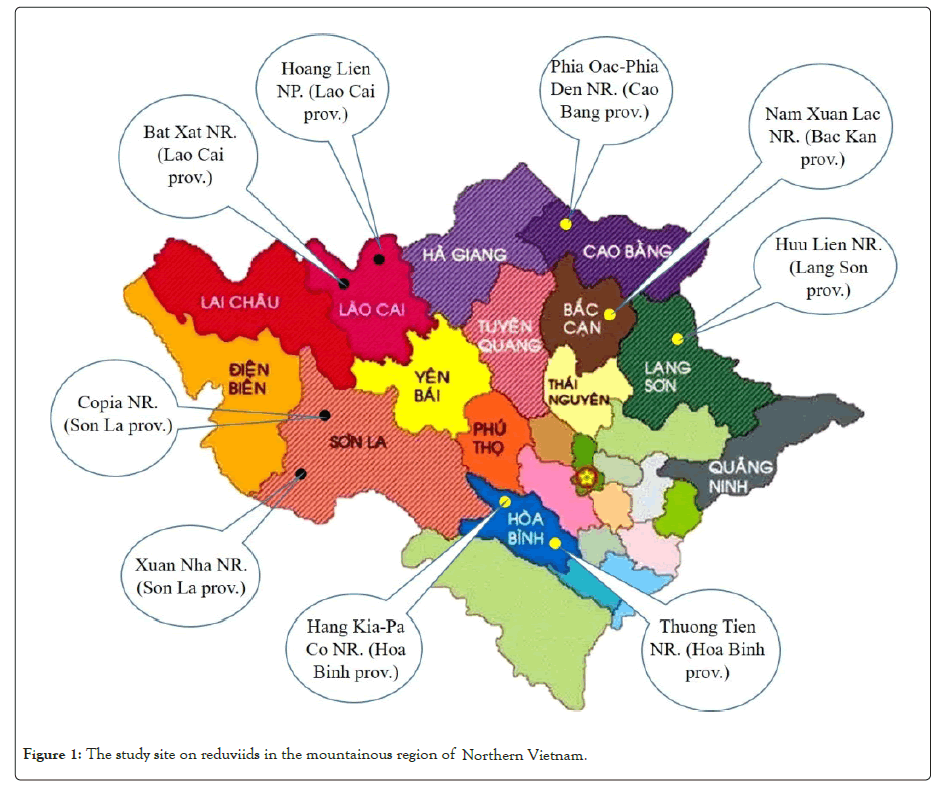
Figure 1: The study site on reduviids in the mountainous region of Northern Vietnam.
7. Huu Lien Nature Reserve lies about 90 km due north of Ha Noi and includes all of Huu Lien commune and a part of Yen Thinh commune, Huu Lung district, Lang Son province with spreading 21030'-21046'20'' N and 106035'48''-106048'15'' E. The landscape of the nature reserve is dominated by limestone karst. According to the investment plan [2].
8. Nam Xuan Lac is situated in western Bac Kan province. To the west, the site is contiguous with the Ban Bung sector of Na Hang proposed nature reserve. The topography of the site is characterized by steep limestone karst formations, separated by flat-bottomed valleys with spreading 22017’12’’-22019’45’’ N and 105028’31’’- 105033’20’’ E [2].
9. Phia Oac-Phia Den National Park (Cao Bang province) stretches through the communes of Thanh Cong, Quang Thanh, Phan Thanh, and Hung Dao and the town of Tinh Tuc in Nguyen Binh district. The park has a total area of over 10,500 ha, with its highest peak at nearly 2,000 meters above sea level with spreading 22°35′- 22°55′ N; 105°53′-106°13′ E [2].
The study on habitats and preys
Investigation assassin bugs were conducted in some habitats as the higher montane evergreen forest and lower montane evergreen forest (EM); Lowland evergreen forest and lowland Semi-Evergreen Forest (SF); The buffer zone (Ecosystem transitional buffer zone between forest, regenerated forests and agricultural ecosystems) (ES); Grassland (GL) and Agricultural ecosystems focus on the important group of plants like fruit trees and industrial crops (AE) following methods of collecting specimens by Steyskal, Schuh and Slater, including sweep net, lights trap, pitfall traps, beating net and the aspirator can also be used effectively when collecting from the light trap, beating net, sweeping net when sorting litter by hand and very many other similar situations. The experimental study [9] with adults and nymph instars of reduviids were collected from different habitats, they will be tested in the laboratory on the plastic bottle (h=20 cm, d=10 cm; 8 x 6 x 4 cm) or the cage (50 x 50 x 100 cm; 40 x 40 x 40 cm) by different preys both in the field condition and in the laboratory. The preys of assassin bugs were the larvae of some pests of order Lepidoptera, Homoptera, Coleoptera and Orthoptera include Anomis flava (1), Helicoverpa armigera (2), Spodoptera litura (3), Plusia sp.(4), Nephotettix bipunctatus (5), Empoasca biguttula (6), Empoasca flavescens (7), Erianthus spp. (8), Pieris brassicae (9), Aphis sp. (10), Aulacophora spp. (11), Chrysomela spp. (12), Rhopalosiphum spp. (13), Oxya spp. (14) and Corcyra cephalonica (15).
Taxonomy
By morphology of species of Reduviidae and their prey basis on morphological characteristics, the analysis of morphology was conducted with an SZX7 Olympus microscope. The morphological structure was painted on SZX7 Olympus. The documents for reference and comparative morphological description are based on [10-16]
Statistics
The experimental data with the tracking indicators will be analysis and calculate the probability level (P<0.05) by Primer-e
The species reduviid in the mountainous region of Northern Vietnam
The research on assassin bugs (Reduviidae) is conducted based on the specimens in the Institute of Ecology and Biological Resources were collected from April to July (2019-2021 year) on 5 habitats in the mountainous region of Northern Vietnam with nearly 593 specimens of reduviids of 7 subfamilies (Harpactorinae, Saicinae, Reduviinae, Ectrichodinae, Emesinae, Peiratinae and Stenopodainae), and preys of some species of them.
Table 1 shows that: 76 species of assassin bugs of 43 genera, 7 subfamilies (family Reduviidae) in the mountainous region of Northern Vietnam were recorded. Among 76 species of assassin bugs with 5 species are newly recorded in Vietnam (Parascadra rubida [5], Peirates turpis Walker, 1873, Brachytonus nigripes [5], Durganda rubra Amyot and Serville and Petalocheirus spinosissimus Distant, 1903). The genera Peirates, Ectomocoris, Oncocephalus and Ectomocoris have 4 species, genera Acanthaspis, Reduvius, Polytoxus, Lisarda, Canthesancus, Pygolampis, Biasticus, Vesbius and Sycanus have 3 species, remaining genera have 1-2 species. Among the 7 subfamilies recorded in the northern mountainous region of Vietnam, the subfamily Harpactorinae is the largest subfamily of scarlet beetles with 23 species, among them 6 species are recorded in agricultural ecosystems (Biasticus flavinotus, Biasticus flavus, Coranus fuscipennis, Rhynocoris fuscipes, Sycanus croceovittatus and Sycanus falleni) [3,4]. The results of this study are also consistent with [5,6] as the subfamily Harpactorinae is the largest reduviid subfamily in Vietnam, including more than 34 genera and 62 species. In agricultural ecosystems, a few species of the subfamily Harpactorinae have been studied for biological control of pests in the field as Coranus fuscipennis, Coranus spiniscutis, Sycanus croceovittatus and Sycanus falleni.
The species diversity of reduviid in surveyed sites
The diversity index reflects the difference in species composition between surveyed sites. This difference is also related to the number of individuals in each species and the distribution of the number of individuals in each species of the whole community. The Shannon- Weiner diversity index (H') of each study site is shown in (Table 2). The Lao Cai (Bat Xat, Hoang Lien) has the highest diversity index (H'=3.598) and the number of species (N=59). Cao Bang (Phia Oac-Phia Den); Hoa Binh (Thuong Tien, Hoang Kia-Pa Co), Son La (Xuan Nha, Copia), Bac kan (Nam Xuan Lac) and Lang Son (Huu Lien) have the diversity index and the number of species (H'=3.547, N=56), (H'=2.681, N=25), (H'=2.598, N=21), (H'=2.553, N=17) and (H'=2.536, N=15), respectively (Table 2).
At 6 surveyed sites in the mountainous region of Northern Vietnam shows that: The index of similarity in species composition at 6 surveyed sites was divided into different groups (Figure 2). Group 1, Lao Cai (Bat Xat, Hoang Lien) and Cao Bang (Phia Oac-Phia Den) achieved 58%. Group 2, Hoa Binh (Thuong Tien, Hoang Kia-Pa Co) and Son La (Xuan Nha, Copia) nearly 65%. The similarity index between group 1 and group 2 reached nearly 43%. Group 3, Bac kan (Nam Xuan Lac) and Lang Son (Huu Lien) nearly 64%. The similarity index between group 3 and group 4 reached nearly 50%. The similarity index of groups 1, 2 and groups 3 and 4 only reached about 38%.
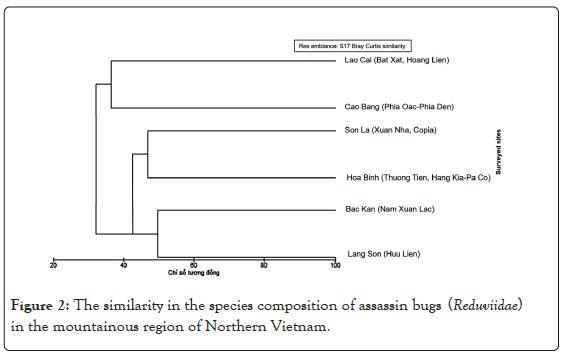
Figure 2: The similarity in the species composition of assassin bugs (Reduviidae Sycanus falleni Stal, Vesbius sanguinosus Stal Velinus malayus Stal, ) in the mountainous region of Northern Vietnam.
The prey and habitat of assassin bugs
In habitats in the mountainous region of Northern Vietnam, the higher montane evergreen forest and lower montane evergreen forest (EM) was the highest recorded 69 species (rate 45.39%); the lowland evergreen forest and lowland semi-evergreen forest (SF) were the second highest recorded 28 species (rate 18.42%); The buffer zone (ES) recorded 12 species (rate 7.89%); Grass-land (GL) recorded 17 species (rate 11.18%) and agricultural ecosystems (AE) recorded 26 species (rate 17.11%) (Figure 3).
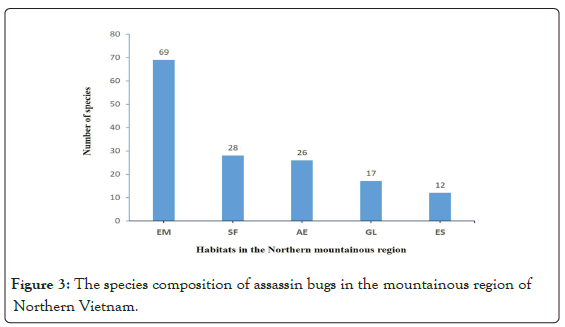
Figure 3: The species composition of assassin bugs in the mountainous region of Northern Vietnam.
In Agricultural ecosystems (AE), the numbers of species of assassin bugs that attack preys have been recorded in Figure 4. The prey of assassin bugs is the larvae of 15 species of pest insects of order Lepidoptera, Homoptera, Coleoptera and Orthoptera. Among 76 species of assassin bugs were recorded the prey of 60 species (Table 1).
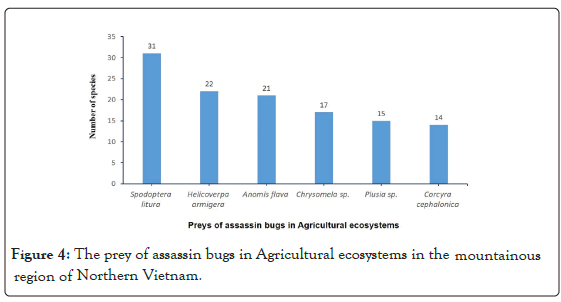
Figure 4: The prey of assassin bugs in Agricultural ecosystems in the mountainous region of Northern Vietnam.
| No | Name of species | Distribution | Habitats | Their preys |
|---|---|---|---|---|
| Subfamily Ectrichodiinae Amy. and Ser. 1843 | ||||
| 1. | Ectrychotes andreae Thunberg, 1784 | SL, CB | EM, ES | 4,8,9 |
| 2. | Ectrychotes comottoi Lethierry, 1883 | HB, BK, LC | EM, GL | 4,8,9 |
| 3. | Ectrychotes lingnanensis China, 1940 | SL, CB | EM, ES | 8,9 |
| 4. | Mendis rufus Hsiao and Ren, 1981 | HB, LC | EM, SF | 5, 15 |
| 5. | Bayerus pilosus Hsiao, 1973 | CB, LC | EM, SF | 15 |
| 6. | Neozirta orientalis Distant, 1919 | CB | EM, ES | 15, 11 |
| 7. | Parascadra rubida Hsiao, 1973* | CB, LC | EM | 15 |
| 8. | Vilius melanopterus Stal, 1863 | CB, LC | EM | 5, 11 |
| Subfamily Peiratinae Amyot and Serville, 1843 | ||||
| 9. | Sirthenea dimidiate Horvath, 1911 | LC | EM, ES | 15, 13 |
| 10. | Sirthenea flavipes Stal, 1855 | HB, SL, BK, LS, CB | EM, GL, AE | 3,4 |
| 11. | Sirthenea nigra Cai et Tomokuni, 2004 | LC | EM, GL, AE | 3,4 |
| 12. | Lestomerus affinis Serville, 1831 | CB | EM, GL, AE | 3,4,12 |
| 13. | Peirates arcuatus Stal, 1871 | HB, SL, BK, LS, CB, LC | EM, GL, AE | 3,4,12 |
| 14. | Peirates leptidoides Wolff, 1804 | CB, LC | EM, GL, AE | 4,12 |
| 15. | Peirates atromaculatus Stal, 1870 | LC | EM, SF | unknown |
| 16. | Peirates turpis Walker, 1873* | CB | - | unknown |
| 17. | Ectomocoris atrox Stal, 1855 | LC | EM, AE | 3,4,12 |
| 18. | Ectomocoris elegans Fabricius, 1803 | CB | EM, AE | 3,4,12 |
| 19. | Ectomocoris yunnanensis Ren, 1990 | LC | EM, SF | unknown |
| 20. | Ectomocoris biguttulus Stal, 1870 | CB, LC | EM, GL, AE | 3,12 |
| Subfamily Reduviinae Latre., 1807 | ||||
| 21. | Acanthaspis geniculata Hsiao, 1976 | CB | EM, AE, ES | 3,4,12 |
| 22. | Acanthaspis ruficeps Hsiao, 1976 | HB, SL, BK, LS, CB, LC | EM, GL, AE | 3,12 |
| 23. | Acanthaspis collaris Hsiao, 1976 | LC | EM, GL, AE | 3,12, 15 |
| 24. | Gerbelius typicus Distant | CB, LC | EM, AE | 3,4,12 |
| 25. | Brachytonus nigripes Hsiao* | CB | EM, SF | unknown |
| 26. | Durganda rubra Amyot & Serville* | LC | EM, SF | unknown |
| 27. | Reduvius tenebrosus Stal, 1863 | CB | EM, SF | 5, 12, 14 |
| 28. | Reduvius decliviceps Hsiao, 1976 | LC | EM, SF | 2, 12,14 |
| 29. | Reduvius gregoryi China, 1925 | CB, LC | EM, ES | 12,14 |
| Subfamily Saicinae Stal, 1859 | ||||
| 30. | Polytoxus femoralis Distant ,1903 | CB, LC | GL, AE | 1, 2, 5, 6, 7 |
| 31. | Polytoxus fuscipennis Hsiao, 1965 | HB, SL, BK, LS, CB, LC | GL, AE | 1, 2, 6, 7 |
| 32. | Polytoxus ruficeps Hsiao, 1965 | CB, LC | EM,AE | 1, 2, 6, 7, 12, 15 |
| Subfamily Stenopodanae Amyot and Ser., 1843 | ||||
| 33. | Lisarda pilosa Hsiao, 1974 | CB, LC | EM, AE | 3,4,12 |
| 34. | Lisarda uniformis Distant, 1903 | CB, LC | EM, SF | 3, 4, 14 |
| 35. | Lisarda rhypara Stal, 1859 | BK, CB | EM, SF | 1, 2, 3 |
| 36. | Petalocheirus spinosissimus Distant, 1903* | LC | EM, SF | unknown |
| 37. | Valentia hoffmanni China, 1940 | HB, SL, BK, LS, CB, LC | EM, AE | 1, 2, 3 |
| 38. | Aulacogenia corniculata Stal, 1870 | CB | EM | unknown |
| 39. | Canthesancus geniculatus Distant, 1902 | LC | EM, AE | 1, 2, 3, 4, 14, 15 |
| 40. | Canthesancus helluo Stål, 1863 | HB, BK, CB, LC | EM, SF | 1, 2, 3,14, 15 |
| 41. | Canthesancus trimaculatus Amyot & Serville, 1843 | HB, BK, CB, LC | EM, SF | 1, 2, 3,14, 15 |
| 42. | Pygolampis biguttata Reuter, 1887 | CB, LC | EM, AE | 10, 11 |
| 43. | Pygolampis longipes Hsiao, 1977 | CB, LC | EM,SF, AE | 1, 2, 10, 13 |
| 44. | Pygolampis rufescens Hsiao, 1977 | HB, CB, LC | EM, AE | unknown |
| 45. | Oncocephalus pudicus Hsiao, 1977 | HB, SL, LS, CB, LC | EM, AE | 1, 2, 3, 4, 14, 15 |
| 46. | Oncocephalus purus Hsiao, 1977 | LC | EM, SF | 12, 11 |
| 47. | Oncocephalus scutellaris Reuter, 1882 | CB, LC | ES, GL, AE | 1, 2, 12, 15 |
| 48. | Oncocephalus lineosus Distant, 1903 | CB | ES, GL, AE | 12, 15 |
| 49. | Staccia diluta Stal, 1859 | CB | EM, ES | unknown |
| 50. | Staccia plebeja Stal, 1866 | HB, SL, BK, LS, CB, LC | EM, ES | unknown |
| Subfamily Emesinae Amyot and Serville, 1834 | ||||
| 51. | Emesopsis nubilus Uhler, 1984 | CB | EM | unknown |
| 52. | Empicoris rubromaculatus Blackburn, 1889 | CB, LC | EM, SF | unknown |
| 53. | Ploiaria glabella Wygodzinsky, 1966 | LC | SF, ES | unknown |
| Subfamily Harpactorinae Amy. and Serv., 1843 | ||||
| 54. | Astinus siamensis Distant, 1903 | SL, LS, CB, LC | EM | 9, 10 |
| 55. | Biasticus confucuss Hsiao, 1979 | SL, CB, LC | EM | 1, 2,3 |
| 56. | Biasticus flavinotus Matsumura | HB, SL, CB, LC | EM, GL, AE | unknown |
| 57. | Biasticus flavus Distant, 1903 | SL, LS, LC | EM, SF, AE | 1, 2,3 |
| 58. | Coranus fuscipennis Reuter, 1881 | HB, SL, BK, LS, CB, LC | EM, ES GL, AE | 1, 2,3 |
| 59. | Endochus nigricornis Stal, 1859 | BK, LS | EM, GL | 3 |
| 60. | Euagoras plagiatus Burmeister, 1834 | HB, BK, LS, CB, LC | EM, SF | 9, 11 |
| 61. | Rhynocoris marginellus Fabricius, 1803 | HB, CB, LC | EM | 1, 2,3 |
| 62. | Rhynocoris fuscipes Fabricius | HB, SL, LC | EM, AE | 6, 7,8 |
| 63. | Isyndus reticulatus Stål, 1868 | HB, SL, BK, CB, LC | GL | 1, 2, 3 |
| 64. | Panthous ruber Hsiao, 1979 | CB, LC | EM | 3, 13 |
| 65. | Poliditus armatissimus Stal, 1859 | CB, LC | EM, SF | 4 |
| 66. | Rihirbus trochantericus Stal, 1861 | CB, LC | EM | 5 |
| 67. | Sphedanoletes impressicollis Stal, 1861 | CB, LC | EM, SF | 2 |
| 68. | Sycanus croceus Hsiao, 1979 | HB, SL, CB, LC | EM, SF | 1, 2, 3 |
| 69. | Sycanus croceovittatus Dohrn, 1859 | HB, SL, BK, LS, CB, LC | EM, SF, AE | 1, 2, 3 |
| 70. | Sycanus falleni Stal, 1863 | HB, SL, BK, LS, CB, LC | EM, SF, AE | 1, 2, 3 |
| 71. | Vesbius purpureus Thunberg, 1783 | HB, SL, BK, LS, CB, LC | EM | 1, 2, 3 |
| 72. | Vesbius sanguinosus Stal | LC | EM, SF | - |
| 73. | Velinus malayus Stal, 1863 | HB, CB | EM, SF | 1, 13 |
| 74. | Velinus annulatus Distant | HB, CB, LC | EM, SF | unknown |
| 75. | Velinus rufiventris Hsiao | HB, SL, LC | EM, SF | unknown |
| 76. | Villanovanus nigrorufus Hsiao, 1982 | LC | EM | 3, 13 |
Note: *Newly recorded for Vietnam. Lao Cai: LC; Cao Bang: CB; Hoa Binh: HB; Son La: SL; Bac Kan: BK; Lang Son: LS.
Table 1: The list of species reduviid, distribution and their preys in the mountainous region of Northern Vietnam.
| Surveyed sites | Number of species | Number of individuals | Index (J') | Index Shannon-Weiner (H’) | |
|---|---|---|---|---|---|
| Lao Cai | Bat Xat Nature Reserve | 59 | 189 | 0.9375 | 3.598 |
| Hoang Lien National Park | |||||
| Cao Bang | Phia Oac - Phia Den National Park | 56 | 176 | 0.9255 | 3.547 |
| Hoa Binh | Thuong Tien Nature Reserve | 25 | 58 | 0.9815 | 2.681 |
| Hang Kia - Pa Co Nature Reserve | |||||
| Son La | Xuan Nha Nature Reserve | 21 | 55 | 0.9766 | 2.598 |
| Copia Nature Reserve | |||||
| Bac Kan | Nam Xuan Lac Nature Reserve | 17 | 59 | 0.9466 | 2.553 |
| Lang Son | Huu Lien Nature Reserve | 15 | 56 | 0.9287 | 2.536 |
Table 2: Index Shannon–Weiner (H’) in surveyed sites.
The prey of 31 species is the Spodoptera litura species (rate 19.02%), of 22 species is Helicoverpa armigera (rate 13.50%), of 21 species is Anomis flava (rate 12.88%), of 17 species is Chrysomela sp. (rate 10.43%), of 15 species is Plusia sp. (rate 9.20%), of 14 species is Corcyra cephalonica (rate 8.59%) and the prey of 3-8 species of assassin bugs are the Oxya spp., Nephotettix bipunctatus, Empoasca biguttula, Empoasca flavescens, Erianthus spp., Pieris brassicae, Aphis spp. Aulacophora bicolor, Rhopalosiphum spp. species (rate 1.81%–4.91%).
The results of this study are also consistent with [7,8] as the prey of assassin bugs in the Central Highlands of Vietnam are the larvae of 15 species of pest insects of order Lepidoptera, Homoptera, Coleoptera and Orthoptera. The prey of 19 species is the Anomis flava, the prey of 17 species is Helicoverpa armigera, the prey of 22 species is Spodoptera litura, the prey of 10 species is Plusia sp. and the prey of 16 species is Corcyra cephalonica (Figure 5).
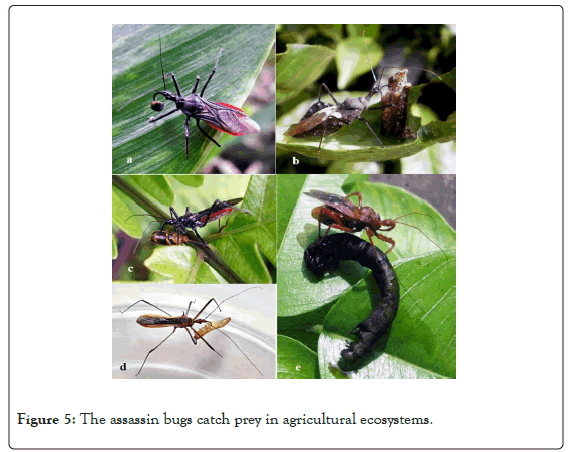
Figure 5: The assassin bugs catch prey in agricultural ecosystems.
In the mountainous region of Northern Vietnam, 76 species of assassin bugs of 43 genera, 7 subfamilies of family Reduviidae in the mountainous region of Northern Vietnam were recorded with 5 species are newly recorded in Vietnam.
The Lao Cai (Bat Xat, Hoang Lien) has the highest diversity index, and Bac Kan (Nam Xuan Lac), Lang Son (Huu Lien) have the lowest diversity index. The index of similarity of species composition at 6 surveyed sites were divided into group 1, Lao Cai (Bat Xat, Hoang Lien) and Cao Bang (Phia Oac-Phia Den); group 2, Hoa Binh (Thuong Tien, Hoang Kia-Pa Co) and Son La (Xuan Nha, Copia) and group 3, Bac Kan (Nam Xuan Lac) and Lang Son (Huu Lien).
The number of species on the higher montane evergreen forest and lower montane evergreen forest (EM) was the highest and the buffer zone (ES) recorded the lowest. In Agricultural Ecosystems (AE), the prey of assassin bugs is the larvae of 15 species of pest insects. The prey of 60 species of the family Reduviidae were recorded
This research is funded by the Vietnam Academy of Science and Technology for senior researchers under grant number NVCC09.03/21-21.
We declare that we have no conflict of interest.
Citation: Lam TX (2022) The Species Assassin Bugs (Heteroptera: Reduviidae) and their Preys in the Mountainous Region of Northern Vietnam. Entomol Ornithol Herpetol. 10: 261.
Received: 03-Dec-2021 Accepted: 17-Dec-2021 Published: 24-Dec-2021
Copyright: © 2021 Lam TX. This is an open-access article distributed under the terms of the Creative Commons Attribution License, which permits unrestricted use, distribution, and reproduction in any medium, provided the original author and source are credited.